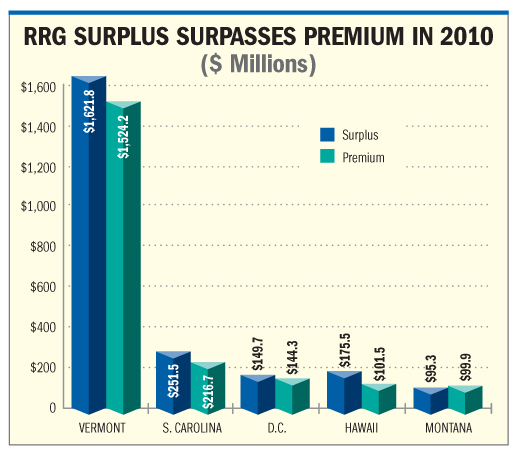While risk-retention groups (RRGs) saw premiums decline in 2010, RRG domiciles last year experienced marked overall growth—and for the first time ever, surplus surpassed total premiums.
Premiums for the RRG industry in 2010 dropped 3.5 percent to $2.48 billion. But industry assets grew by 8 percent to $7.15 billion and industry surplus grew by 11.9 percent to $2.84 billion.
 During the early part of the last decade, premiums, total assets and surplus all climbed exponentially. When the economy stalled, however, RRG premiums began to falter. But both assets and surplus continued to increase steadily, never seeing a decline.
During the early part of the last decade, premiums, total assets and surplus all climbed exponentially. When the economy stalled, however, RRG premiums began to falter. But both assets and surplus continued to increase steadily, never seeing a decline.
Recommended For You
Want to continue reading?
Become a Free PropertyCasualty360 Digital Reader
Your access to unlimited PropertyCasualty360 content isn’t changing.
Once you are an ALM digital member, you’ll receive:
- Breaking insurance news and analysis, on-site and via our newsletters and custom alerts
- Weekly Insurance Speak podcast featuring exclusive interviews with industry leaders
- Educational webcasts, white papers, and ebooks from industry thought leaders
- Critical converage of the employee benefits and financial advisory markets on our other ALM sites, BenefitsPRO and ThinkAdvisor
Already have an account? Sign In Now
© Touchpoint Markets, All Rights Reserved. Request academic re-use from www.copyright.com. All other uses, submit a request to [email protected]. For more inforrmation visit Asset & Logo Licensing.







